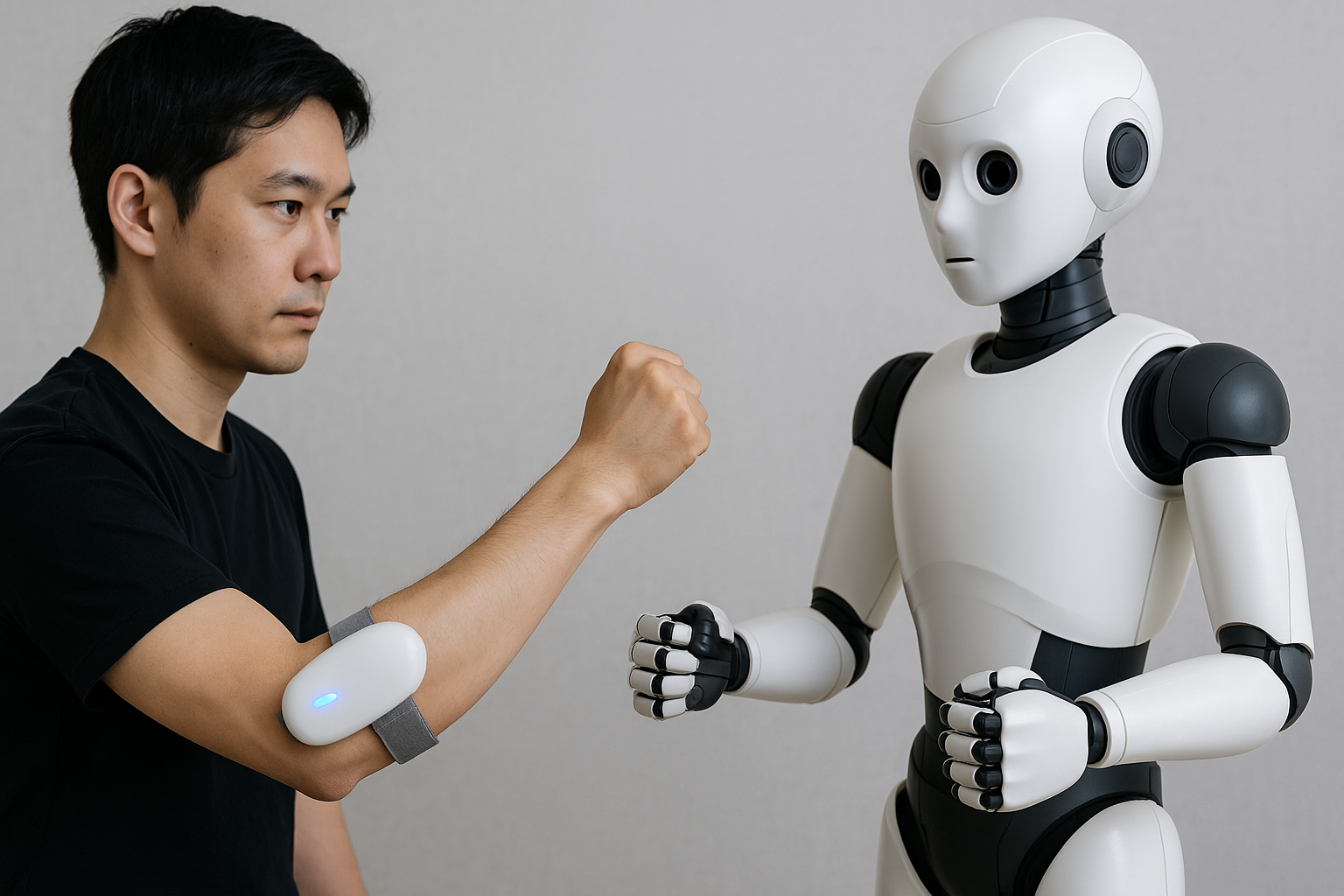In a monumental leap toward the future of human robot interaction, Japanese tech startup H2L has unveiled its cutting edge Capsule Interface a wearable technology that uses your body’s natural muscle movements to control humanoid robots. This isn’t just a gadget it’s a redefinition of telepresence, robotics, and how we perceive remote interaction. With this body control interface, H2L is turning science fiction into science fact.
How the Capsule Interface Works: The Body as a Control System
At its core, the Capsule Interface is a wearable device that attaches to the forearm and detects subtle muscle contractions and tension. These signals are then transmitted to a connected humanoid robot, which mimics not only the action but also the intensity and speed of movement. What sets this system apart is its ability to replicate the force of motion, providing a more immersive and emotionally resonant experience.
Unlike traditional control systems that rely on joysticks, buttons, or VR gloves, the body control interface allows users to interact with machines as an extension of themselves. This direct communication with technology blurs the lines between human intention and robotic execution.
What the Scientists Are Saying
Dr. Kenji Takahashi, a robotics professor at the University of Tokyo, explains the significance, “This is more than remote control; it’s remote embodiment. With the Capsule Interface, humans can inhabit machines. This is key to the evolution of telepresence, especially in hazardous environments or in healthcare.”
He highlights how muscle driven control could revolutionize fields like elder care, surgery, and search and rescue missions, where precision and human judgment are paramount.
A Nurse Assists Remotely from 300 Miles Away
In a pilot trial conducted in early 2025, a nurse based in Osaka used the Capsule Interface to assist a caregiver at a rehabilitation center in Fukushima. By mimicking physical actions such as gently turning a patient or lifting a limb during physiotherapy, the robot was able to replicate the exact touch, speed, and even pressure applied by the nurse.
The feedback from both the nurse and the patient was overwhelmingly positive. The patient reportedly said, “It felt like the nurse was right next to me, helping me personally. The robot wasn’t cold or distant it moved with human warmth.”
Such trials underline the emotional and practical impact of this body control interface in real world scenarios.
Personal Experience From Gamer to Robotic Guide
Akira Nomura, a tech enthusiast and gamer, was invited to try the Capsule Interface at a Tokyo expo. He used it to control a humanoid robot stationed across the city. I could feel the resistance when I picked something up. It wasn’t like pressing a button it was like being the robot he said. This deeply human connection through tech is what sets the Capsule Interface apart. It offers not just control, but co presence, allowing users to emotionally and physically feel like part of the machine.
A New Chapter in Human Machine Synergy
1. Accessibility: The Capsule Interface allows people with disabilities to control machines with minimal effort.
2. Safety: It removes humans from hazardous environments nuclear sites, disaster zones while still giving them full operational control.
3. Empathy in Tech: The replication of force adds a human touch to robotic tasks, making machines more relatable and emotionally intelligent.
We are entering a world where physical presence is optional, but emotional and cognitive engagement remains fully intact thanks to innovations like the body control interface.
Ethical Considerations and Future Prospects
While the technology is exciting, it also raises important questions,
Privacy: Muscle signals are intimate data. How will this be protected?
Over Reliance: Will we lose the human skill set as we rely more on robotic proxies?
Economic Impact: What does this mean for jobs traditionally done by people on site?
Experts suggest establishing global ethical standards around robotic control systems to address such concerns before the technology becomes mainstream.
The Bigger Picture Robotics with a Soul
The Capsule Interface is not just a marvel of engineering it’s a testament to Japan’s vision for a more emotionally intelligent technological future. As the world hurtles toward greater automation, H2L reminds us that machines can still carry our emotions, intentions, and humanity if we design them that way.
With the body control interface expected to become commercially viable within the next two years, industries ranging from manufacturing and healthcare to entertainment and education are watching closely.
When Your Body Becomes the Remote
Imagine controlling a rescue robot in a collapsed building with just the motion of your arm or guiding a disabled person’s support robot with the gentle flex of your fingers. The potential applications of this body control interface are limitless, and H2L has cracked open the door to that reality.
This isn’t just a tech breakthrough it’s a cultural shift. One where human connection is no longer bound by physical presence but is extended through empathetic technology.


1 thought on “Japan’s Body Control Interface by H2L Redefines Robotics: Control Robots Using Just Your Muscle Movements”